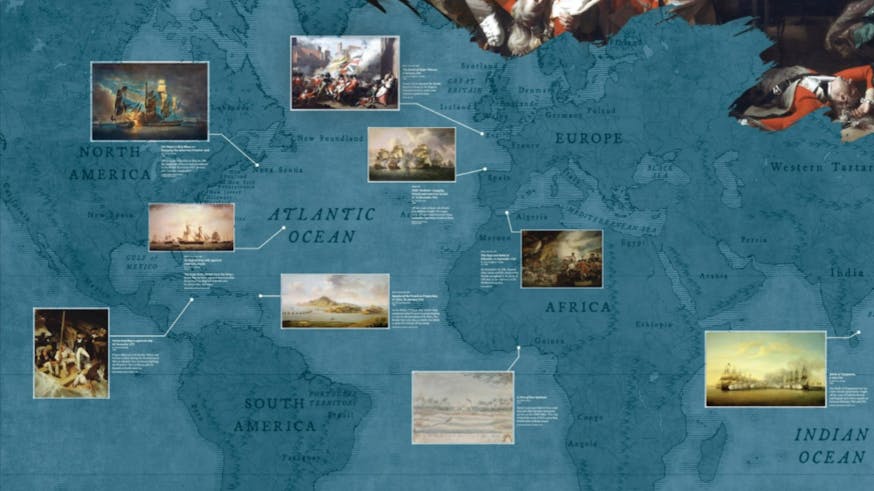Silhouette Art's Unique Connection to Revolutionary-era Philadelphia
By Ted Stuessy, silhouette artist
The silhouette has a long, winding history that bridges class and geographical divides. As the artform made its way from Europe to North America, these shadowy images gained a unique connection to Revolutionary-era Philadelphia, steps away from the Museum of the American Revolution today.
What are now referred to as silhouettes were in fact referred to as “likenesses,” or sometimes “shades,” in the 18th century. Already popular in Europe, the term silhouette was originally associated with the mid-18th-century French aristocrat Étienne de Silhouette, who had a hobby of collecting profile likenesses cut from paper. Named after an unpopular figure in France, the term silhouette was initially used with a negative connotation meaning “on the cheap;” however, this reference was eventually lost, and the term became synonymous with miniature shadow portraits.

The practice of having miniature profiles created of oneself soon came to America. In 1802, a portion of the Pennsylvania State House – now known as Independence Hall – temporarily housed the Peale Museum. This museum was created by Charles Willson Peale as a way to expose Philadelphians to items of cultural interest, including portraits of prominent members of society, natural history exhibits, and all manner of curiosities. To ensure repeat visitation, many exhibits were added, specifically a mechanical device called a Physiognotrace, which was used to create a miniature likeness of patrons as an added amusement.
Many of the silhouettes of the day were created by Moses Williams (1777-1825), who was the primary cutter of profiles at the Peale Museum in the late 18th and early 19th century. At its height of popularity, the museum turned out up to 8,000 silhouettes a year. As few people could afford to have a formal portrait painted, the “poor man’s portrait” was an appealing option to many and had particular appeal within the Quaker community. Williams was enslaved, and while growing up in the Peale household, he learned many skills, one of which was cutting silhouettes. When Williams became emancipated, he continued to cut silhouettes at the museum and earn his living, which allowed him to purchase a house and marry.
With the commercial development of the camera in the 1830s, silhouettes began to fall out of fashion. The ability to record the image of people and families had become more and more accessible and silhouettes no longer appealed to a society that was embracing a new technological marvel. And for a period of time, the silhouette started to fade into obscurity.
Within the genre of silhouette art, there is a good deal of variation in both style and method of execution by its practitioners. Early silhouettes in England were sometimes painted with a mixture of soot and beer and applied on a plaster base. Artists further expanded the form to include golden embellishments upon painted silhouettes to give an iridescent, three-dimensional appearance. Original silhouettes made of paper, such as those from the Peale Museum, were cut out as negatives, which were laid over a black fabric to reveal the silhouette. Other times, the silhouette was cut from blackened paper and the resulting silhouette was then affixed upon a light-colored background. In the home, one could create a silhouette by tracing a shadow cast upon a piece of paper affixed to a wall.
Silhouette Art at Winter Weekends
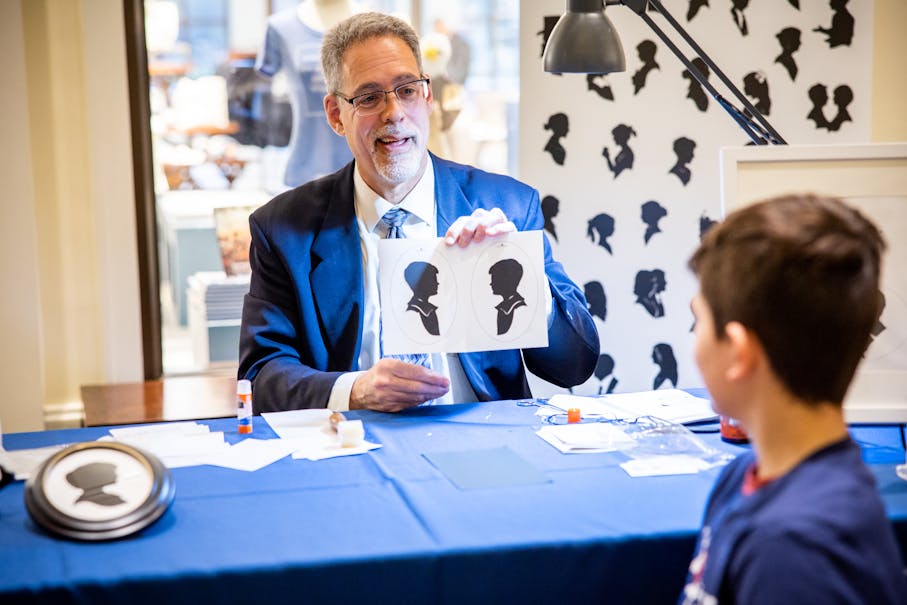
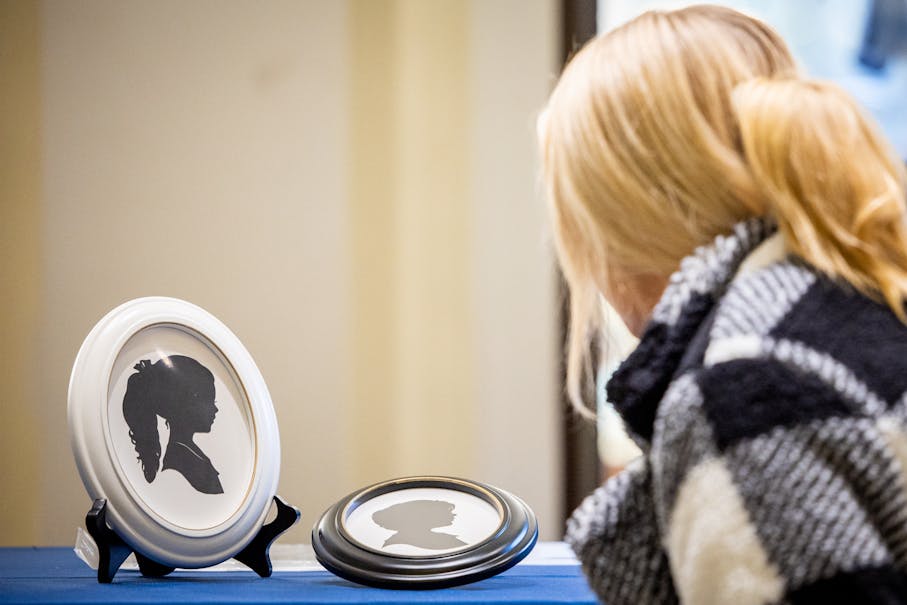
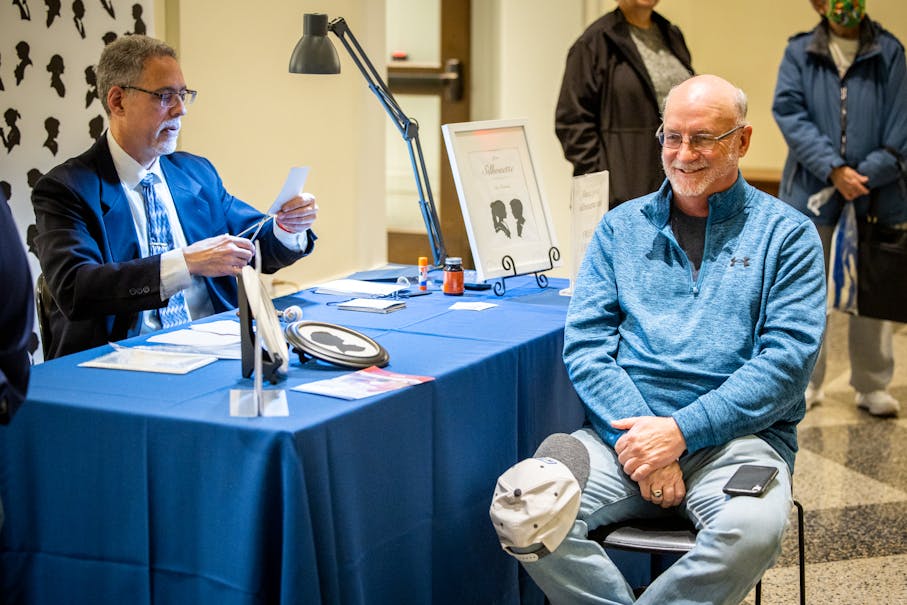
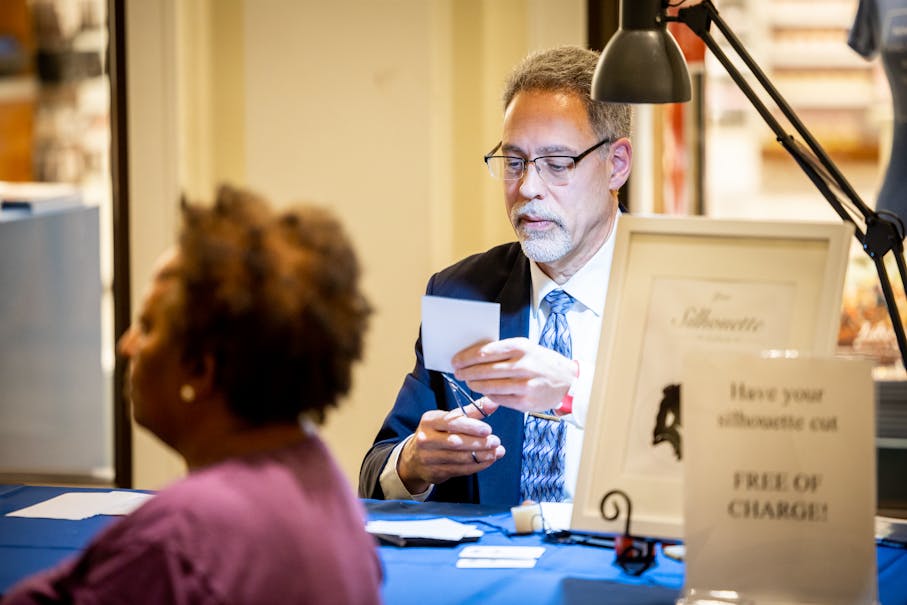
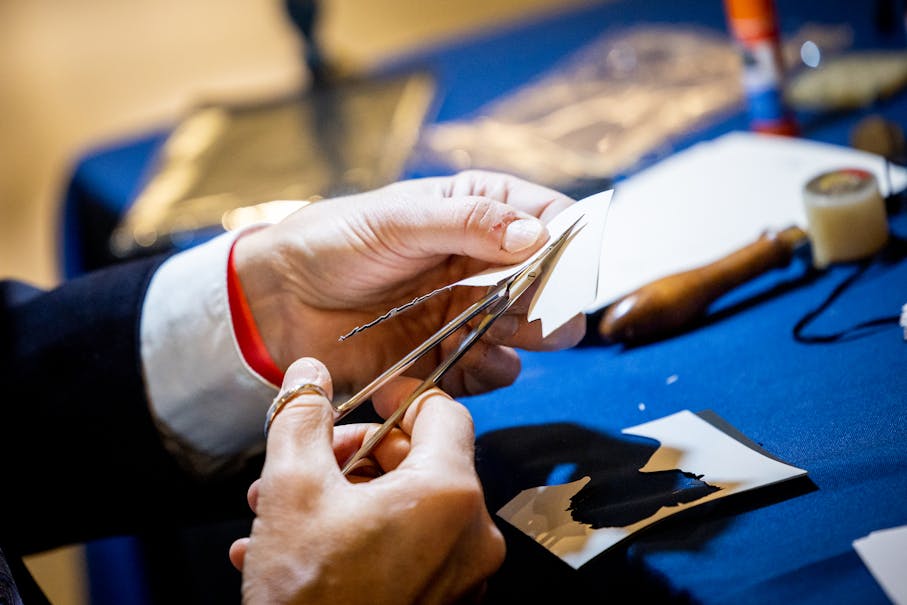
In the 20th century, the silhouette artform began to reemerge. Silhouette images were used as a graphic art and no longer relegated exclusively to miniature portraits. From military recruitment posters during World War I in England to modern day advertising and current corporate logos, silhouette art has been used to create a powerful visual impact without the use of interior details or colors found in other mediums. The practice of having a silhouette cut in person continued to enjoy a resurgence at fairs, retail stores, and resort areas, ebbing and flowing at different times throughout the 20th century.
Currently, there are few practitioners who cut silhouettes live at in-person events to keep this unique and charming art alive. Perhaps the attraction is a bit of nostalgia, or perhaps it’s merely the ability of a silhouette to convey a somewhat whimsical yet elegant image. The uniquely analog feel of a silhouette is particularly eye-catching in the digital age.
Ted Stuessy has been creating silhouettes in the traditional freehand style for years. With an attentive eye and a pair of surgical scissors, he will create your likeness in a matter of minutes. You can learn more about his work at shadowcuts.com.
Learn More
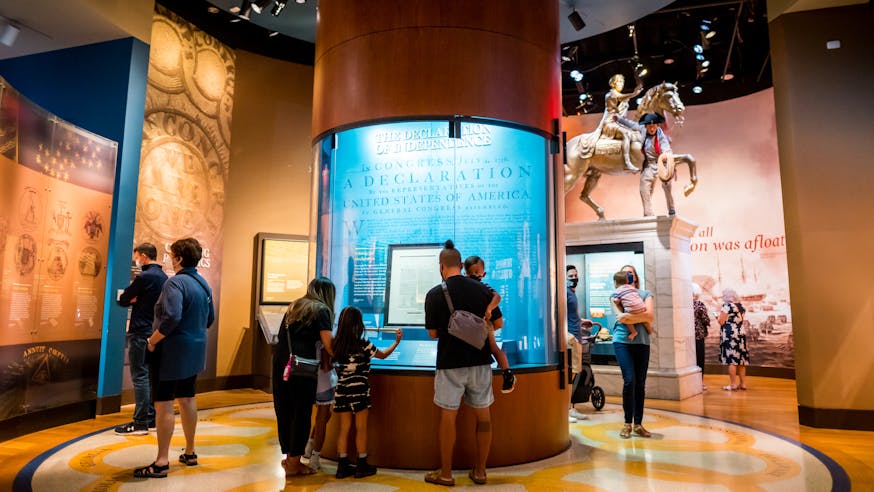
Plan Your Visit
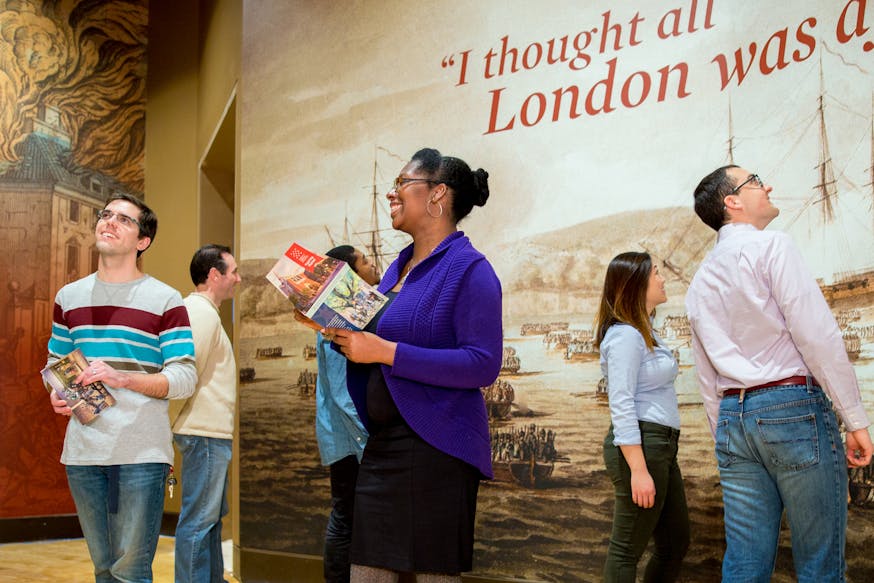
Become a Member
